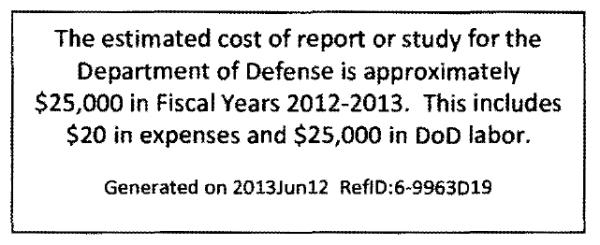A U.S. nuclear-weapons test in the Pacific, 1954.
Ever wonder how, where and when the U.S. might decide to unleash the big one?
Well, your days of wondering are over: the Pentagon has just released a revamped Report on the Nuclear Employment Strategy of the United States. (Would it be sniping to suggest it should be titled, a Report on the Nuclear Unemployment Strategy of the United States? Wouldn’t it boost Unemployment‘s self-esteem to be cited, in a good way, once in awhile?).
Anyway, it comes in response to congressional direction and is required whenever the nation’s nuclear war plans are tweaked.
The nine-page report is a typical Washington kabuki dance. There’s a Democratic Administration that wants to reduce the world’s nuclear weapons (“Although the new U.S. nuclear employment strategy would allow reductions below New START Treaty levels, the new employment strategy does not direct any changes to the currently deployed nuclear forces of the United States”). But it’s trying to convince Republican skeptics on Capitol Hill that it won’t let such dreams cloud its responsibility to keep the nation’s nukes primed and ready for action (“Although the new strategy makes clear that we will maintain a strong and credible deterrent, it also makes clear that we must be prepared for the possibility that deterrence will fail.”)
You can tell how much progress President Obama is likely to make by the chilly reception the GOP gave his call in Germany on Wednesday for cutting the U.S. and Russian deployed nuclear straetgic forces from about 1,500 to 1,000 each. “President Obama has taken to a foreign country to announce another round of unilateral disarmament, only to appease a foreign audience,” said Rep. Mike Turner, R-Ohio, a member of the House Armed Services Committee. “The President seems only concerned with winning the approval of nations like Russia, who will applaud a weakened United States.”
Meanwhile, back to the report. It’s both fuzzy and dense:
The President’s new nuclear employment guidance is consistent with the fundamentals of deterrence that have long guided U.S. nuclear weapons policy, but with appropriate changes to meet today’s strategic environment…The United States will only consider the use of nuclear weapons in extreme circumstances to defend the vital interests of the United States, or its Allies and partners.
(Whew!)
For nuclear pros, it goes on to note that “the new guidance requires the United States to maintain significant counterforce capabilities against potential adversaries. The new guidance does not rely on a `counter-value’ or `minimum deterrence’ strategy,” which suggests the U.S. has no interest in being just a little-more nuclear-armed than the next superpower. The U.S. nuclear employment strategy also includes “intra-leg hedge options,” it says, sounding more like a Wall Street financier or master gardener than nuclear-war planners (definition: “uploading another warhead type from within a leg of the Triad in the event that a particular warhead fails.”)
The report adds that the U.S. government, if it uses nuclear weapons, will “apply the principles of distinction and proportionality and seek to minimize collateral damage to civilian populations and civilian objects.”
Objects? You mean like cities? It doesn’t say, but presumably they’re talking about something bigger than backyard grills.
There’s both good and bad news in the Bolt-Out-of-the-Blue Dept., that Cold War chestnut that the U.S. had to be ready for the Soviets to wipe out our atomic might in a surprise attack with a barrage of nuclear weapons:
Recognizing the significantly diminished possibility of a disarming surprise nuclear attack, the guidance directs DoD to examine further options to reduce the role of Launch Under Attack plays in U.S. planning, while retaining the ability to Launch Under Attack if directed.
The guidance also makes clear “the United States will maintain a nuclear Triad, consisting of intercontinental ballistic missiles (ICBMs), submarine-launched ballistic missiles (SLBMs), and nuclear-capable heavy bombers. Retaining all three Triad legs will best maintain strategic stability at reasonable cost, while hedging against potential technical problems or vulnerabilities.” (Frankly, we always get a little edgy when they cite Triad with a capital “T”.)
Apparently, China is now a part of the nuclear-superpower balance:
These [U.S.] forces should be operated on a day-to-day basis in a manner that maintains strategic stability with Russia and China, deters potential regional adversaries, and assures U.S. Allies and partners.
Perhaps we should think of Washington, Moscow and Beijing as the new nuclear Triad.
The employment strategy notes that while U.S. nuclear forces are on hair-trigger alert, they’re aimed at the middle of assorted oceans, “so that in the highly unlikely event of any accidental or unauthorized launch of a U.S. nuclear weapon, the weapon would land in the open ocean.”
Perhaps the most interesting fact in the entire document is this one on its cover:
And you didn’t think the Pentagon could buy anything for $20.



